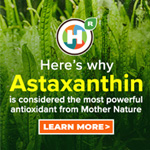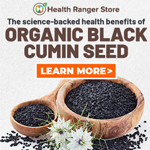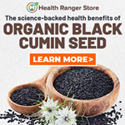
Cure poison ivy naturally with jewelweed
Saturday, June 16, 2012 by: David Gutierrez, staff writer
Tags: poison ivy, remedies, jewelweed
- Aerosolized bioweapons? Strange “diploid biomasses” falling out of the sky in Florida captured under the microscope
- German researchers find link between mRNA vaccines and GENETIC CHANGES that precede CANCER and AUTOIMMUNE DISORDERS
- DEATH by 12 VACCINES SIMULTANEOUSLY: Doctor playing catch-up on jabs injects 1-year-old baby with massive combination of dirty vax cocktails
- Newly released JFK files reveal Pentagon's role in creating Lyme disease and covid in the same lab
- European Court of Justice: Healthcare professionals who promoted or administered COVID-19 vaccines are CRIMINALLY LIABLE for any harm caused
- “Project Aldrin”: Senate probes Meta's alleged censorship dealings with China
- “Bankrupt Tesla” movement EXPOSED: Left-wing extremists, Biden-linked operatives target Elon Musk in coordinated attack
- When antibiotics are unavailable, natural ANTIMICROBIAL compounds become essential first line defenses against infection
- The dark legacy of the U.S. government’s UNETHICAL medical and military research
- NASA, State Dept. admit to renaming DEI programs to dodge Trump's ban in undercover sting
- Dr. Mary Talley Bowden drops bombshells about children being permanently damaged by mRNA jabs during Tucker Carlson interview
- “The Message of the Sphinx”: Did a lost civilization build the Giza monuments?
- FBI imposed gag order on agents to silence Hunter Biden laptop truth before 2020 election, new chat logs reveal
- Exclusive: Microscopic analysis suggests unknown biological contaminants falling from the sky
- Astaxanthin: Nature’s ultimate antioxidant powerhouse
- Russia warns of “catastrophic” fallout if Trump bombs Iran, escalating global tensions
- UN's stealth carbon tax on shipping: A direct hit to American wallets
- Analysis: The coming economic collapse, a mass uprising and Trump's three secret weapons to halt the growing revolt
- Newly released JFK files reveal Pentagon's role in creating Lyme disease and covid in the same lab
- Oncologist warns of ‘terrifyingly aggressive’ cancers in children, linked to immune suppression from COVID vaccines
- Kiss Your Genetic Privacy Good-Bye! 23andMe Gets Green Light to Sell Your Intimate Genetic Details to Anyone They Want
- European Court of Justice: Healthcare professionals who promoted or administered COVID-19 vaccines are CRIMINALLY LIABLE for any harm caused
- Analysis: The coming economic collapse, a mass uprising and Trump's three secret weapons to halt the growing revolt
- Woman contracts WORLD'S DEADLIEST VIRUS after unknowingly being given the WRONG VACCINE
- Sugar-free deception: Artificial sweeteners hijack hunger signals, fuel obesity epidemic, study warns
- NIH study, buried for decades, reveals that Flu Shots INCREASE elderly deaths, not prevent them
- Britain’s descent into police state censorship: Parents raided for questioning their daughter’s school system online
- AI weather model outperforms traditional forecasts, boosts accuracy by 20%
- Aerosolized bioweapons? Strange “diploid biomasses” falling out of the sky in Florida captured under the microscope
- DARPA: The shadowy innovator behind the world’s most advanced military technologies
- The Health Ranger releases “Vaccine Zombie” song and music video, using AI-animated zombies for the music video
- Utah governor allows ban on LGBT pride flags in public buildings and schools, will take effect without his signature
- COVID-19 scandal linked to CANCER SURGE: Billionaire researcher sounds alarm
- Musk targets “strangely wealthy” lawmakers in DOGE probe, names Pelosi, McConnell, Schumer
- Dr. Suzanne Humphries makes bombshell appearance on Joe Rogan podcast, exposing vaccine industry deception back to POLIOMYELITIS
- Ancient kitchen secrets REVEALED: How garlic, ginger and green onions fight cancer and heart disease
- Newly released JFK files reveal Pentagon's role in creating Lyme disease and covid in the same lab
- California's social media censorship law struck down: A victory for free speech or a threat to online safety?
- EPA advisor admits the agency is funneling billions to climate groups ahead of Trump’s return to White House
- Dr. Mike Yeadon releases 15-minute testimony - WATCH - about genocidal intent of COVID “vaccines”
- The Health Ranger releases “Vaccine Zombie” song and music video, using AI-animated zombies for the music video
- Florida takes a stand: DeSantis proposes permanent ban on mRNA vaccine mandates
- Rep. Nancy Mace introduces bill to ban biological males from female facilities on federal property
- Mike Adams releases country western hit single: Goin’ Back in Time is Comin’ Home
- Sugarcane extract superior to cholesterol-lowering drugs?
- Survival 101: Effective EMF blocking techniques
- “Why we influenced the 2020 elections”: Facebook files reveal the coordinated effort to bury the Hunter Biden laptop story
- Unpacking the Lies That We’ve Been Fed – new song and music video released by Mike Adams, the Health Ranger
- House Intelligence Committee calls for the ARREST and PROSECUTION of Dr. Anthony Fauci
- The pandemic as a tool for INDOCTRINATION: Understanding “The Indoctrinated Brain” by Dr. Michael Nehls
- Mike Adams releases music poetry sensation: A Child of God
- OpenAI whistleblower who dissented against how the company trained ChatGPT found dead
- Attorney and TikTok influencer explains how he was offered hundreds of dollars to make false claims about Trump, Republicans
- CONSERVATIVES SOUND THE ALARM: Big Pharma and the Left trying to force $32 billion money grab from America’s seniors into year-end spending deal
- Red Cross issues warning to stop blood plasma donations from vaccinated people
- Scientists confirm: GENIUS brain function can be spontaneously unleashed in humans without any apparent cause
- EPA advisor admits the agency is funneling billions to climate groups ahead of Trump’s return to White House
- HYSSOP: What research reveals about the health benefits of this ancient holy herb
- Two containers with completed ballots fall out of truck in Florida
- Fully vaccinated about to see “tsunami” of illness and death, warns virologist
- Global leaders unite to clamp down on “misinformation” with UN-backed Cascais Declaration
- BREAKING: 2025 NDAA authorizes mandatory military draft of WOMEN across America… as Pentagon pursues global NUCLEAR war with both Russia and China at the same time
- Michael Yon warns of a ZIONIST TAKEOVER in Trump’s second administration
- Ozempic and Wegovy weight loss drugs are injectable LIZARD VENOM PEPTIDES that may unleash a devastating wave of organ failure… side effects align with symptoms of SNAKE BITES
- BOMBSHELL: DNA testing kits are a SCAM to develop ethnic-specific bioweapons
- Newly released JFK files reveal Pentagon's role in creating Lyme disease and covid in the same lab
- Israeli soldiers accused of even more torture and abuse in the West Bank
- These 13 countries just signed an agreement to engineer a global FAMINE by destroying food supply
- NASA admits that climate change occurs because of changes in Earth’s solar orbit, and NOT because of SUVs and fossil fuels
- The Health Ranger releases “Vaccine Zombie” song and music video, using AI-animated zombies for the music video
- RFK Jr. clears key hurdle: Sen. Susan Collins backs controversial HHS nominee, signaling a new era for health policy
- Sermon 30: How Jesus reveals Caesar’s FAKE CURRENCY and FALSE AUTHORITY
Jewelweed, or Impatiens capensis, has long been used as a remedy for skin disorders by indigenous North Americans. It apparently contains chemicals that neutralize the components responsible for the skin-irritating effects of poison oak, poison ivy and other irritants including stinging nettle, insect bites and ringworm. Folk remedies also recommend jewelweed poultices as treatment for minor injuries such as bruises, cuts, burns, sores, sprains and warts.
According to Varro Tyler in his book Herbs of Choice, a 1958 study compared jewelweed to "standard poison ivy dermatitis treatments," including corticosteroids. The researchers found that the plant was effective in treating 108 out of 115 patients, leading to complete symptom relief within two to three days.
Identifying Jewelweed
Jewelweed is a short, three to five foot tall annual plant with oval leaves and trumpet-shaped flowers that hang down from the plant like jewels on a necklace. The flowers on the variety known as Pale Jewelweed are yellow, while those of the Spotted Touch-Me-Not are orange, with dark red dots. All Jewelweed seeds "pop" when touched.Jewelweed grows best in humid woodlands, often in the same places as stinging nettle or poison ivy, both of which it can help protect against. Yet in spite of a folk tradition that says you will find jewelweed growing anywhere there is poison ivy, the plant is actually much less robust and has more specific needs than poison ivy. For example, poison ivy can thrive in either sunny or shady conditions, while Jewelweed needs damp, darker microclimates. Jewelweed especially flourishes along creek beds. It can be found most often along North America's east coast, from northern Florida to southern Canada, and blooms from May through October.
Using Jewelweed
Spotted Jewelweed is the variety most widely used in treatment of skin irritation, particularly due to poison ivy, but Pale Jewelweed is also believed to be effective. Anecdotal evidence suggests that garden-variety impatiens may be almost as effective at treating skin conditions as their wild relatives. Any lessened effectiveness may be outweighed by greater ease of cultivation.
When exposed to poison ivy, poison oak or stinging nettle, the best thing to do is to immediately take a jewelweed plant, slice the stem open, and rub it directly on the exposed parts of the skin. This prompt action will often be enough to prevent a reaction entirely, and at the very least will offer significant symptom relief.
Chopped jewelweed can be brewed in boiling water to produce a dark orange infusion, which can then be stored for later use. This liquid can be frozen into ice cubes, which can then be rubbed directly onto skin rashes for healing relief. Alternately, the liquid can be canned in a pressure cooker. Frozen jewelweed infusions remain potent for up to a year, while canned infusions remain potent until opened.
Note that Yellow Jewelweed is not known to be as effective as other varieties in infusion form, and does not produce the characteristic orange liquid. Jewelweed should not be made into alcoholic tinctures, as the combination of jewelweed and alcohol has been known to produce adverse reactions. Likewise, the high moisture and oil content of jewelweed means the plant does not hold up well when dried. This means that jewelweed cannot be preserved as an active healing agent in dry form.
Sources for this article include:
http://www.altnature.com/jewelweed.htm
https://www.naturalnews.com/026516_poison_ivy_remedies.html
http://www.naturalnews.com
Poison ivy at FETCH.news
Get independent news alerts on natural cures, food lab tests, cannabis medicine, science, robotics, drones, privacy and more.
Take Action: Support Natural News by linking to this article from your website
Permalink to this article:
Embed article link: (copy HTML code below):
Reprinting this article:
Non-commercial use OK, cite NaturalNews.com with clickable link.
Follow Natural News on Facebook, Twitter, Google Plus, and Pinterest
Science News & Studies
Medicine News and Information
Food News & Studies
Health News & Studies
Herbs News & Information
Pollution News & Studies
Cancer News & Studies
Climate News & Studies
Survival News & Information
Gear News & Information
News covering technology, stocks, hackers, and more



"Big Tech and mainstream media are constantly trying to silence the independent voices that dare to bring you the truth about toxic food ingredients, dangerous medications and the failed, fraudulent science of the profit-driven medical establishment.
Email is one of the best ways to make sure you stay informed, without the censorship of the tech giants (Google, Apple, Facebook, Twitter, YouTube, etc.). Stay informed and you'll even likely learn information that may help save your own life."
–The Health Ranger, Mike Adams













































